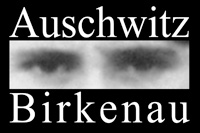




Executions
Prisoners held in the camp as hostages or sent there by Gestapo for political reasons were executed in Auschwitz. Prisoners jailed in the cells of camp prison (Block 11) for belonging to the camp resistance movement or caught in an attempt to escape were also put to death. So were Poles not registered in the camp but convicted by summary courts.
The death sentence was carried out by: shooting, hanging, gassing or starvation. At first, prisoners—mostly Poles but also Soviet POWs—were shot by a firing squad. From 1941 to 1943, the majority of the executions took place at the so‑called Death Wall. In 1944 they were carried out in Birkenau, either inside or just outside the crematorium buildings, as when 200 Jewish prisoners were shot in October 1944 after the Sonderkommando mutiny.
It is estimated that about 5,500 prisoners, jailed in the camp prison, and the so‑called police prisoners sentenced to death by the summary court, lost their lives by shooting. An important but unspecified number of prisoners were sent straight from the camp to be shot, as were Soviet POWs and Poles brought in from the outside.
Execution by gassing was used to murder among others about 2,000 Soviet POWs, about 320 members of the penal company after an attempted mass escape and several hundred Poles sentenced to death by the Gestapo summary court.
Execution by hanging was carried out usually during roll calls, as a way of intimidating the prisoners. In July 1943, in the largest public execution, the Germans hanged 12 Poles from the surveyors’ Kommando in reprisal for the escape of three of their fellow prisoners. The last execution by hanging took place in the so‑called camp extension on January 6, 1945, when four Jewish women were executed on charges of supplying Sonderkommando prisoners with explosives that they used during their mutiny.
Camp authorities carried out also the death penalty by starvation. It was inflicted on prisoners chosen from the block or Kommando of the prisoner who had escaped.
